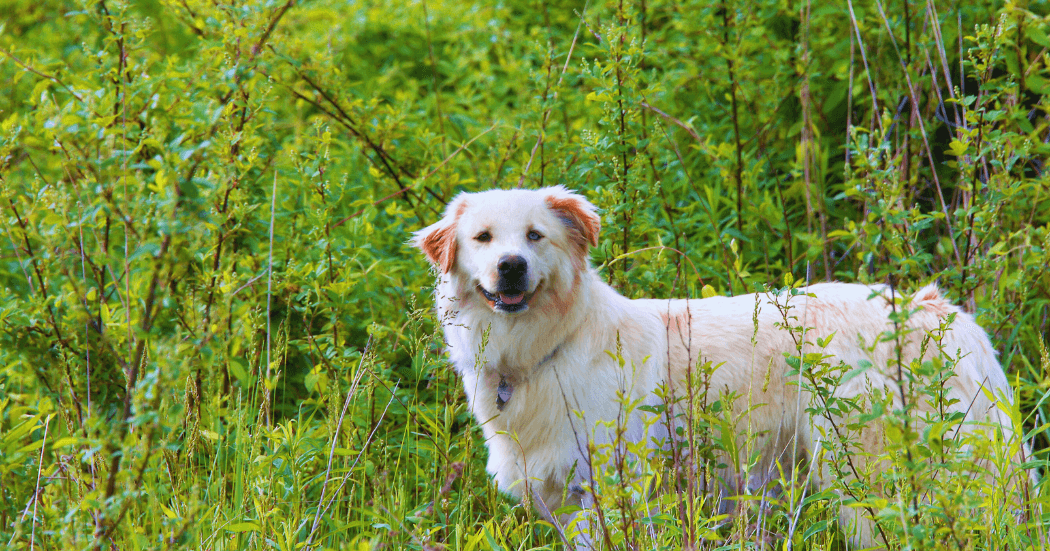Dog shedding is a normal process that occurs in all dogs to some degree. Different breeds shed in different amounts and at different times of the year. Understanding the reasons behind dog shedding can help pet owners manage it effectively. Shedding can be influenced by factors such as genetics, coat type, hormonal changes, environmental conditions, and overall health. Regular brushing and grooming, along with the use of shedding control products, can help reduce shedding and keep a dog’s coat healthy.
Factors Affecting Dog Shedding
Dog shedding can be influenced by various factors that pet owners should be aware of in order to manage their dog’s shedding effectively. These factors include genetics, coat type, hormonal changes, and environmental conditions.
Genetics and Shedding
Genetics play a significant role in a dog’s shedding patterns. Certain breeds are predisposed to shedding more than others. For example, breeds such as German Shepherds and Labrador Retrievers are known for their heavy shedding, while Poodles and Bichon Frises tend to shed less.
Key Takeaways
- dog seasonal shedding.
- Brush your dog regularly to remove loose hair and prevent matting.
- Use grooming tools that are appropriate for your dog’s coat type, such as slicker brushes for double-coated breeds.
- Consider using shedding control products, such as shampoos and conditioners, to help minimize shedding.
- Consult with a veterinarian to ensure your dog’s diet is nutritionally balanced and supports a healthy coat.
Coat Type and Shedding
Coat type is another important factor in shedding. Dogs with double coats, such as Huskies and Golden Retrievers, typically shed seasonally. They have a soft undercoat that is shed during specific times of the year. On the other hand, dogs with single coats, like Greyhounds and Dobermans, shed minimally year-round.
Hormonal Changes and Shedding
Hormonal changes can also affect a dog’s shedding patterns. Fluctuations in estrogen and testosterone levels can trigger shedding. Female dogs may experience increased shedding during heat cycles, while male dogs may shed more during periods of sexual maturity.
Environmental Factors and Shedding
Environmental conditions can have a significant impact on a dog’s shedding. Factors such as temperature, humidity, and light exposure can trigger or alter the shedding process. Dogs may shed more in response to seasonal changes or variations in their surroundings.
To help visualize the factors affecting dog shedding, refer to the table below:
| Factors | Impact on Dog Shedding |
|---|---|
| Genetics | Determines the predisposition to shedding in different breeds |
| Coat Type | Influences shedding patterns, with double-coated breeds shedding seasonally and single-coated breeds shedding minimally year-round |
| Hormonal Changes | Fluctuations in estrogen and testosterone levels can trigger shedding |
| Environmental Factors | Temperature, humidity, and light exposure can influence shedding |
Understanding these factors can help pet owners better manage their dog’s shedding by implementing appropriate grooming routines, monitoring hormonal changes, and adjusting environmental conditions to minimize shedding. By addressing these factors, pet owners can keep their furry friends comfortable and ensure a healthy coat.
Seasonal Shedding in Dogs
As pet owners, it’s important to understand the shedding patterns of our beloved dogs. Many dogs experience seasonal shedding, particularly during the spring and fall seasons. Let’s take a closer look at the shedding patterns in dogs and how we can manage them effectively.
Spring Shedding
Spring shedding is a natural response to changing environmental conditions. As the weather gets warmer, dogs shed their thick winter coat to make way for a lighter, more comfortable summer coat. This shedding process helps them adapt to the rising temperatures and stay cool.
During spring shedding, it’s common to see an increase in loose hair as your dog’s coat transitions. Regular brushing can help remove the loose hair and prevent excessive shedding around your home.
Fall Shedding
The fall shedding process is just as important as spring shedding. As the cooler weather approaches, dogs shed their summer coat to make way for a thicker, insulating winter coat. This winter coat helps protect them from the cold temperatures and keeps them warm.
During this time, you may notice increased shedding as your dog’s coat changes. Regular grooming and brushing can help minimize shedding and ensure your dog’s coat remains healthy and well-maintained.
By implementing these strategies, you can effectively manage seasonal shedding in dogs and keep your pet’s coat healthy and beautiful.
| Breed | Shedding Pattern |
|---|---|
| Husky | Heavy shedding during spring and fall |
| Collie | Heavy shedding during spring and fall |
| Labrador Retriever | Light shedding year-round |
| Poodle | Minimal shedding |
Managing Dog Shedding
Regular brushing and grooming are essential for managing dog shedding. The frequency of brushing depends on the dog’s coat type and shedding patterns. Dogs with shorter coats may only require a weekly brushing, while double-coated breeds may need daily brushing during shedding seasons. Choosing the right grooming tools, such as natural-bristle brushes or slicker brushes, can help remove dead hair and distribute natural oils on the coat. Shedding control products, such as shampoos and conditioners, can also help reduce shedding. A consistent grooming schedule can keep a dog’s coat healthy and minimize shedding.
Tips for Brushing and Grooming for Shedding
- dog seasonal shedding.
- Use the appropriate grooming tools based on your dog’s coat type.
- Brush your dog regularly to remove loose hair.
- Distribute natural oils by brushing in the direction of hair growth.
- Consider using shedding control products, such as shampoos and conditioners.
- Establish a grooming schedule that aligns with your dog’s shedding patterns.
Schedule for Managing Dog Shedding
Creating a shedding schedule can help you stay on top of your dog’s grooming needs. The frequency of grooming sessions can vary based on your dog’s shedding patterns. Here’s an example of a shedding schedule:
| Coat Type | Grooming Frequency |
|---|---|
| Short Coat | Once a week |
| Medium Coat | Twice a week |
| Long Coat | Every day during shedding season |
By following a consistent brushing and grooming routine and using the right products, you can effectively manage your dog’s shedding and keep their coat healthy. Regular grooming not only controls shedding but also promotes bonding and helps maintain your dog’s overall well-being.
Nutrition and Shedding
Proper nutrition plays a vital role in maintaining a healthy coat and minimizing shedding in dogs. A well-balanced diet that includes a high-quality protein source as the first ingredient provides the essential nutrients necessary for coat health.
One of the key nutrients for coat health is omega-3 fatty acids. These fatty acids help to nourish the skin and reduce inflammation, which can contribute to excessive shedding. Adding an omega-3 fatty acid supplement, such as fish oil, to your dog’s diet can promote a healthier coat and prevent dry, flaky skin.
Biotin and zinc are also essential nutrients for coat health. Biotin helps to strengthen the hair follicles and improve the overall condition of the coat, while zinc aids in the production of healthy skin cells.
Consulting with a veterinarian is important to ensure your dog’s diet is optimized to support a healthy coat and minimal shedding. They can recommend the appropriate diet and supplements based on your dog’s breed, age, and overall health.
| Nutrient | Role in Coat Health | Sources |
|---|---|---|
| Omega-3 Fatty Acids | Moisturize the coat, reduce inflammation | Fish oil, salmon, sardines |
| Biotin | Strengthens hair follicles, improves coat condition | Egg yolks, liver, nuts, seeds |
| Zinc | Promotes healthy skin cells | Beef, lamb, chicken, pumpkin seeds |
By ensuring your dog receives the essential nutrients for coat health, you can help minimize shedding and promote a shiny, lustrous coat.
Environmental Factors and Shedding
The shedding of a dog’s coat is influenced by various environmental factors. These factors include temperature, humidity, and light exposure. Understanding how these factors affect shedding can help pet owners better manage their dog’s coat and minimize excessive shedding.
Temperature and Shedding
The change in temperature can trigger shedding in dogs. As the seasons transition from colder to warmer weather, dogs shed their thicker winter coat in preparation for the change. This shedding helps dogs adapt to the new environmental conditions and maintain a comfortable body temperature.
Humidity and Shedding
Humidity also plays a role in a dog’s shedding patterns. Low humidity levels can lead to dry skin, which can cause increased shedding. Maintaining an appropriate level of humidity in the environment can help prevent dryness and minimize excessive shedding.
Light Exposure and Shedding
Light exposure, specifically changes in daylight duration, can impact a dog’s shedding patterns. The amount of sunlight a dog is exposed to can influence hormonal changes in their body, which in turn affects the shedding process. Dogs may shed more during periods of longer daylight hours.
By being aware of these environmental factors, pet owners can adjust their grooming routine and care to accommodate their dog’s shedding needs. This can include increasing grooming sessions during shedding seasons, using moisturizing products to combat dryness caused by low humidity, and providing appropriate light exposure to help regulate shedding patterns.
| Factors | Effect on Shedding |
|---|---|
| Temperature | Triggers shedding as seasons change |
| Humidity | Low humidity can lead to dry skin and increased shedding |
| Light Exposure | Changes in daylight duration can impact hormonal changes and shedding patterns |
Medical Conditions and Shedding
In some cases, excessive or abnormal shedding in dogs may be a sign of an underlying medical condition.
- Allergies and Shedding: Allergies can cause skin irritation and lead to excessive shedding in dogs. Common allergens include pollen, dust mites, and certain foods. Skin sensitivity can result in itching and scratching, which can further contribute to shedding.
- Hormonal Imbalances and Shedding: Hormonal imbalances, such as hypothyroidism or Cushing’s disease, can disrupt the natural hair growth cycle in dogs. This can result in abnormal shedding patterns, including excessive shedding or hair loss.
- Skin Infections and Shedding: Bacterial or fungal infections can affect a dog’s skin and coat health, leading to increased shedding. Infections can cause inflammation, itching, and hair loss, contributing to excessive shedding.
If a pet owner notices that their dog’s shedding is not normal, it is important to consult with a veterinarian for a proper diagnosis and appropriate treatment. The veterinarian will perform a thorough examination and may recommend additional tests, such as blood work or skin scrapings, to identify the underlying medical condition.
Case Study: Skin Infection and Shedding
A Labrador Retriever named Max began shedding excessively and developed bald patches on his coat. Concerned about his condition, Max’s owner took him to the veterinarian. After conducting a thorough examination, the vet diagnosed Max with a bacterial skin infection. The infection caused Max’s excessive shedding and hair loss. The veterinarian prescribed antibiotics and recommended regular bathing with medicated shampoo to treat the infection. With proper treatment, Max’s skin condition improved, and his shedding significantly reduced.
| Common Medical Conditions | Symptoms | Treatment |
|---|---|---|
| Allergies | Itching, redness, hair loss | Identify and avoid allergens, medication (antihistamines, immunotherapy) |
| Hormonal Imbalances | Abnormal shedding, hair loss | Hormone replacement therapy, medication, dietary changes |
| Skin Infections | Inflammation, itching, hair loss | Antibiotics, medicated shampoos |
Conclusion
Managing dog shedding and maintaining a healthy coat is essential for every pet owner. By understanding the causes and patterns of dog shedding, you can implement effective strategies to reduce shedding and keep your furry friend comfortable. Regular grooming is key, including frequent brushing and the use of shedding control products. These practices help to remove loose hair and prevent it from spreading around your home.
In addition to grooming, providing a balanced diet is crucial for a healthy coat. Including essential nutrients, such as omega-3 fatty acids, in your dog’s diet can improve coat health and minimize shedding. Omega-3 fatty acids, found in fish oil supplements, help moisturize the skin and prevent dryness, resulting in a lustrous coat and less shedding.
Don’t forget about the impact of environmental factors on shedding. Keeping an eye on temperature, humidity, and light exposure can help you adjust your care routine accordingly. Dogs shed their winter coats in preparation for warmer weather, so be ready to support them through this natural process.
If your dog’s shedding becomes excessive or abnormal, consult with a veterinarian. It may be a sign of an underlying medical condition that needs attention. With these dog shedding management tips and a proactive approach to coat care, you can minimize shedding, maintain a healthy coat, and enjoy a fur-free home.




















